On 19 March 2020, Secretary General Jens Stoltenberg released his Annual Report for 2019.
Throughout 2019, NATO celebrated its 70th anniversary, it continued to adapt to a fast-changing and challenging world, and delivered results to keep its people safe.
For the first time, the Report includes polls on the public perception of the Alliance. These demonstrate that overall support for the NATO Alliance is strong.
Below you will find short descriptions of – as well as direct links to – the elements of the annual report.
- Foreword
- For all who serve
- Deterrence, Defence and Dialogue
- Investing in Security: Setting the Foundations
- Modernising NATO
- Projecting Stability
- Promoting Equality: Women, Peace and Security
- Organisation
- Annexes
You can also download the full annual report.
NATO at 70: The transatlantic bond endures
In 2019, the NATO Alliance turned 70. To mark the occasion, Foreign Ministers gathered in Washington in April, and Leaders met in London in December. Our 29 nations from Europe and North America stood side-by-side in a powerful demonstration of the strength of the transatlantic bond. Together, we celebrated seven decades of peace, prosperity and freedom. We also took stock of NATO’s continued adaptation and set the Alliance’s future direction.
Despite questions about the strength of the transatlantic bond, the reality is that we are doing more together than for many years. Based on polls commissioned by NATO and published for the first time in this Report, 81% of people across the Alliance believe that the collaboration between Europe and North America on safety and security is important. They strongly agree with the principle of collective defence. 76% agree that other NATO Allies should defend them if attacked and 71% agree that their own country should act in defence of another Ally. And a clear majority – 64% - would vote to remain in NATO in a referendum.
For All Who Serve
NATO’s core responsibility is to ensure that the Alliance’s territory and populations remain safe, in a world where peace and security can never be taken for granted. Our free societies and the rules-based international order need to be backed by credible transatlantic defence. Since NATO was created seven decades ago, we rely on the personnel of Allied and partner countries’ armed forces to fulfil this mission.
Throughout 2019, tens of thousands of men and women from Europe and North America served in NATO military commands, exercises, missions and operations to keep our nations safe, from the Mediterranean to the Arctic Sea and from the North Atlantic Ocean to Afghanistan. With their dedication and determination, our soldiers, sailors, aircrew and marines are the living example of NATO’s solidarity and values.
We know that should the need arise, they will stand together to defend and protect each other and keep our nations safe. We owe them and their families deep gratitude for the sacrifices they make on our behalf.
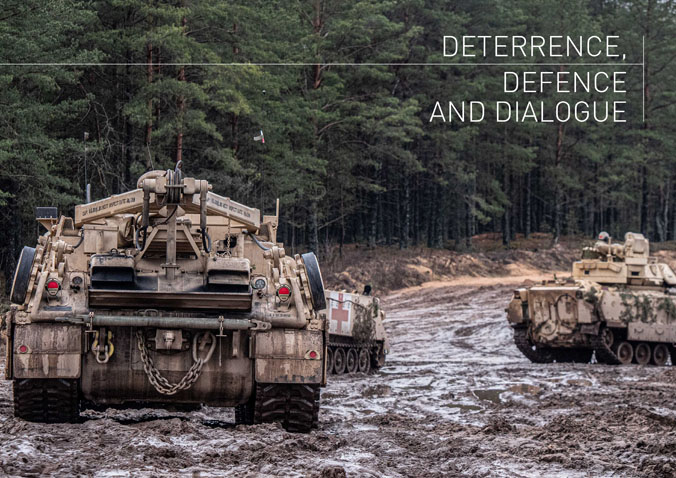 2019 has been a year of rapid adaptation. In response to a complex and unpredictable security environment, Allies continued to strengthen NATO’s collective deterrence and defence posture, on land, at sea, in the air, in space and in cyberspace.
2019 has been a year of rapid adaptation. In response to a complex and unpredictable security environment, Allies continued to strengthen NATO’s collective deterrence and defence posture, on land, at sea, in the air, in space and in cyberspace.
Together, Allies have increased the responsiveness and readiness of their forces and strengthened the Alliance’s ability to rapidly reinforce any Ally that may come under threat. NATO also invested in enhancing its maritime posture, improving capabilities, bolstering resilience and modernising the Alliance, with a new space policy, an adapted command structure, and new tools to counter hybrid and cyber-attacks.
Following the demise of the Intermediate-Range Nuclear Forces (INF) Treaty in 2019 as a result of Russia’s repeated violations, the Alliance has taken concrete steps to adapt its intelligence, surveillance and reconnaissance, air and missile defence and conventional force posture, and introduced measures to safeguard the continued effectiveness of NATO’s nuclear deterrence. These measures were taken to ensure that the Alliance’s deterrence and defence posture remains credible and effective. At the same time, NATO Allies have remained firmly committed to the preservation of effective international arms control, disarmament and non-proliferation.
Read the chapter "Deterrence, Defence and Dialogue" in the Annual Report (PDF)
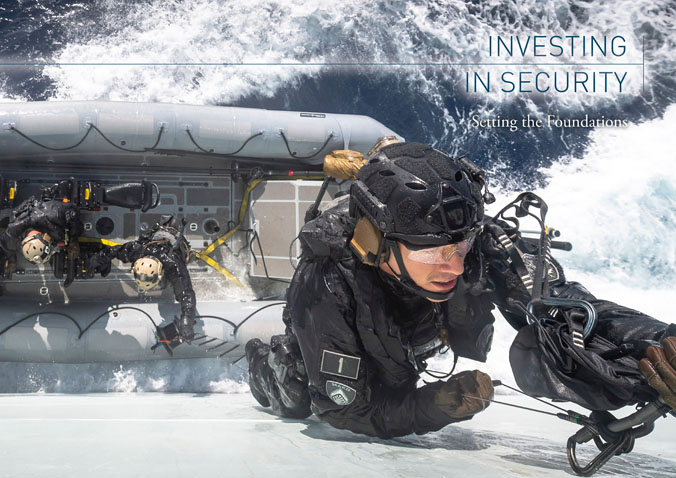 For the Alliance, it is of great importance to ensure fair burden-sharing between Allies on defence expenditure, investments in capabilities, and contributions to NATO’s operations, missions and activities. Allies have agreed and embraced the principle of fair burden-sharing, and they are continuously investing in developing, acquiring and maintaining the capabilities that the Alliance needs to defend its citizens.
For the Alliance, it is of great importance to ensure fair burden-sharing between Allies on defence expenditure, investments in capabilities, and contributions to NATO’s operations, missions and activities. Allies have agreed and embraced the principle of fair burden-sharing, and they are continuously investing in developing, acquiring and maintaining the capabilities that the Alliance needs to defend its citizens.
2019 marked the fifth consecutive year of growth in defence spending for European Allies and Canada, with an increase in real terms of 4.6% from 2018 to 2019. Moreover, nine Allies met the guideline of spending 2% of their Gross Domestic Product (GDP) on defence, up from just three Allies a few years ago.
Between 2016 and 2020, European Allies and Canada will add a cumulative total of USD 130 billion to their defence budgets. As shown in the graph below, based on national plans submitted by Allies in 2019, this figure will rise to USD 400 billion by the end of 2024.
Read the chapter "Investing in Security: Setting the Foundations" in the Annual Report (PDF)
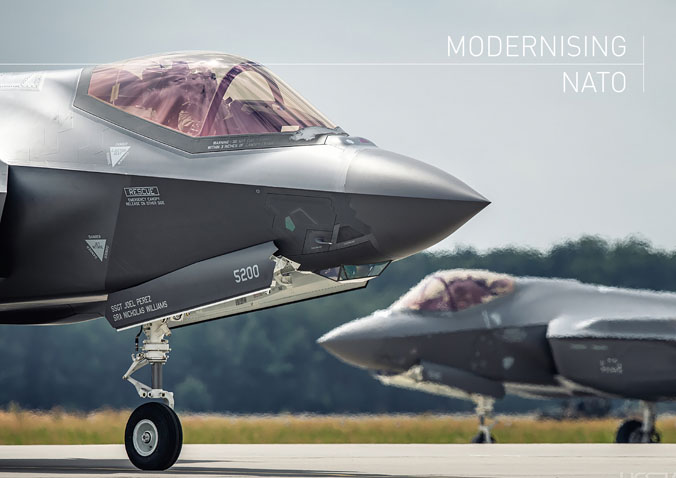 In 2019, the Alliance invested in speed, innovation and resilience by updating the NATO Command Structure, the military backbone of the Alliance; by implementing a series of measures to modernise NATO Headquarters in Brussels; and by optimising the way military capabilities are delivered through NATO common funding.
In 2019, the Alliance invested in speed, innovation and resilience by updating the NATO Command Structure, the military backbone of the Alliance; by implementing a series of measures to modernise NATO Headquarters in Brussels; and by optimising the way military capabilities are delivered through NATO common funding.
Read the chapter "Modernising NATO" in the Annual Report (PDF)
Ensuring the security of Allies is not only about deterrence and defence at home, it is also about developments beyond NATO borders that can impact Alliance security. When NATO’s neighbours are more stable, the Alliance is more secure.
NATO has extensive experience in projecting stability, including through operations and missions in its neighbourhood; but also through political engagement, dialogue and cooperation with partners and with other international organisations, like the European Union. In 2019, the Alliance continued to assist its partners in building stronger defence institutions, improving governance, enhancing resilience, and more effectively contributing to the fight against terrorism.
Read the chapter "Projecting Stability" in the Annual Report (PDF)
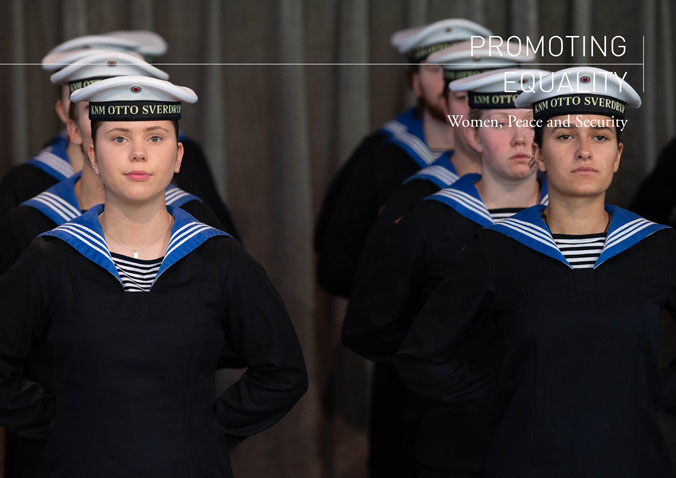 NATO and its partners are committed to promoting the full implementation of the Women, Peace and Security agenda. Gender mainstreaming and the increased representation of women in civilian and military structures improve effectiveness and contribute to a more modern, agile, ready, and responsive Alliance.
NATO and its partners are committed to promoting the full implementation of the Women, Peace and Security agenda. Gender mainstreaming and the increased representation of women in civilian and military structures improve effectiveness and contribute to a more modern, agile, ready, and responsive Alliance.
NATO’s policy on Women, Peace and Security is built around the principles of integration, inclusiveness and integrity. These stem from NATO’s founding values as well as the Alliance’s commitment to continued adaptation. There is a growing understanding of how the integration of gender and the inclusion of women’s voices in all aspects of NATO’s work is essential to peace and security. The principle of integration reflects the importance of gender equality in NATO policies, programmes and projects. Inclusiveness demands that all existing barriers in the way of implementing the full Women, Peace and Security agenda are dismantled. Integrity is key to enhancing accountability and promoting the highest standards of conduct.
Read the chapter "Promoting Equality: Women, Peace and Security" in the Annual Report (PDF)
 NATO Headquarters in Brussels houses the Alliance’s International Staff and International Military Staff, along with 29 Allied delegations and military representations, 19 partner missions and staff from several NATO Agencies. It is the main forum for the discussions and consultations that shape NATO policy and practice.
NATO Headquarters in Brussels houses the Alliance’s International Staff and International Military Staff, along with 29 Allied delegations and military representations, 19 partner missions and staff from several NATO Agencies. It is the main forum for the discussions and consultations that shape NATO policy and practice.

Resolute Support Mission
The Resolute Support Mission is a NATO-led mission to train, advise and assist the Afghan security forces and institutions. The mission was launched on 1 January 2015, immediately following the stand-down of the International Security Assistance Force.
Read the annex"Resolute Support Mission" in the Annual Report (PDF)
Kosovo Force
NATO-KFOR’s mission is to contribute to maintaining a safe and secure environment as mandated by United Nations Security Council Resolution 1244.
NATO cooperates with the United Nations, the European Union and other international actors, as appropriate, to support the development of a stable and peaceful Kosovo. KFOR supports the development of professional, democratic and multi-ethnic security structures in Kosovo.
Read the annex"Kosovo Force" in the Annual Report (PDF)
Defence Expenditure of NATO Countries (2013 – 2019)
NATO collects defence expenditure data from Allies on a regular basis and presents aggregates and subsets of this information. Each Ally’s Ministry of Defence reports current and estimated future defence expenditure according to an agreed definition of defence expenditure. The amounts represent payments by a national government actually made, or to be made, during the course of the fiscal year to meet the needs of its armed forces, those of Allies or of the Alliance. In the figures and tables that follow, NATO also uses economic and demographic information available from the Directorate-General for Economic and Financial Affairs of the European Commission (DG-ECFIN), and the Organisation for Economic Co operation and Development (OECD).
Read the annex "Defence Expenditure of NATO Countries (2013 – 2019)" in the Annual Report (PDF)
Original article can be found @NATO

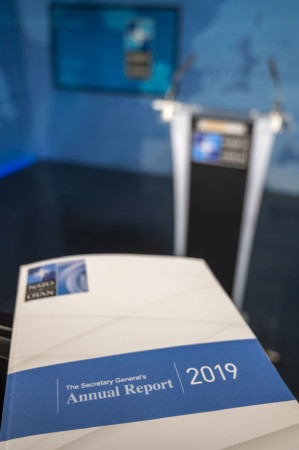

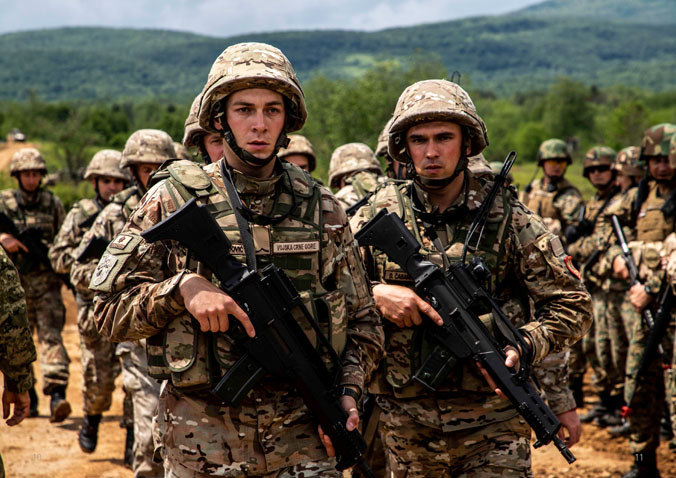
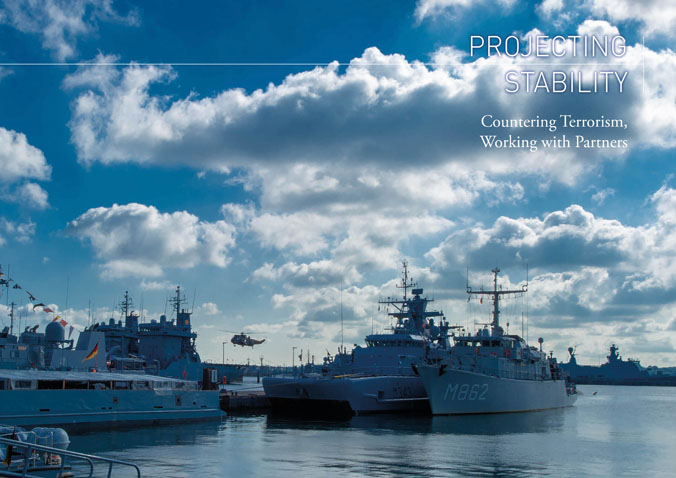
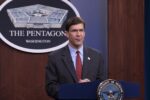
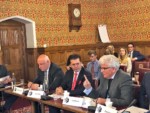


Leave a Reply